This recipe for Mealy Pie Dough (also called Pâte Brisée or Páte Sucrée) is something you must have in your back pocket. Not only will it be the base for your Thanksgiving-Christmas-New Year’s-Three Kings Day pies; it’s a nifty recipe to have on hand throughout the year. Use it to make great quiche crusts for crowded brunches, hand pies for fun desserts, or even breakfast pop-tarts.
Because of the multitude of ways this Mealy Pie Dough can be used, I suggest making it in bulk. This particular recipe will make enough dough for 2 10-inch single crusts (for pecan or pumpkin pies and/or quiches) or 1 2-crust pie (the standard apple or cherry pie set-up).
*I originally published this post in October 2018. I’ve updated the images, the article for clarity and decreased the yield of the pie dough to suit people who don’t feed an army. I’ve also added a video!*
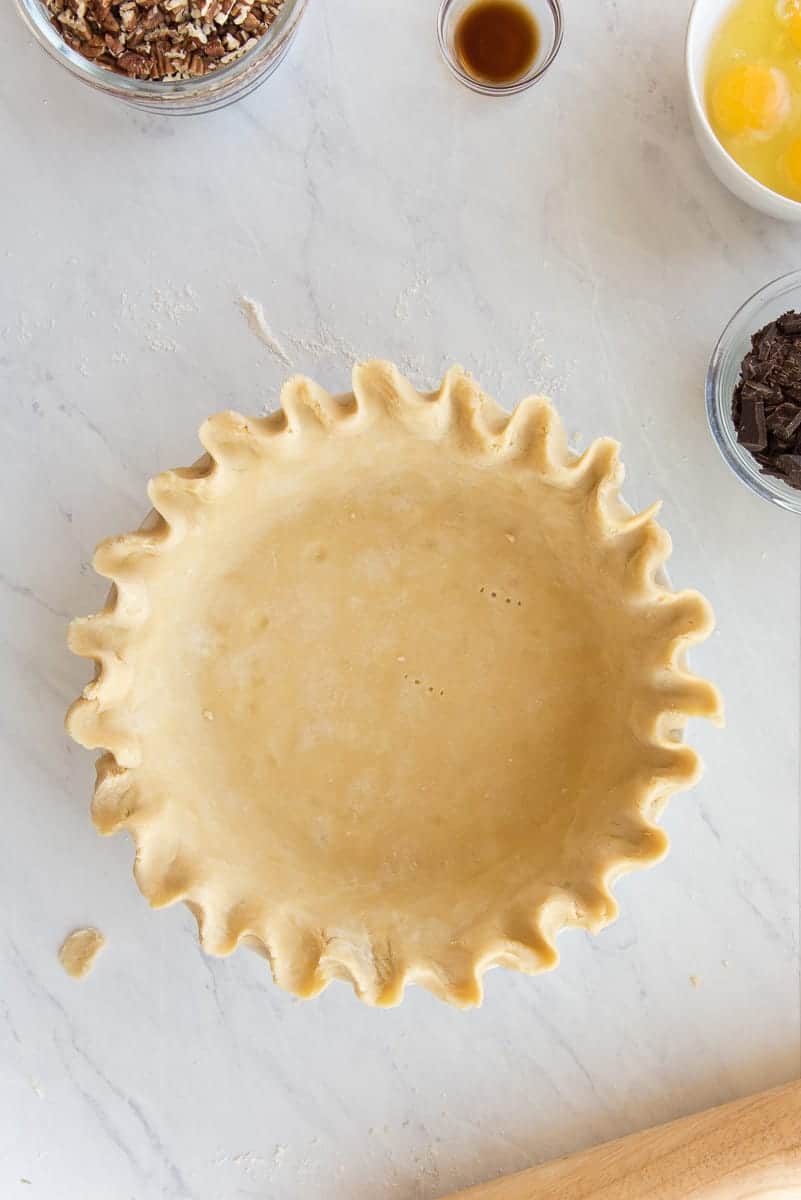
What is a Mealy Pie Dough?
Mealy pie dough stands up to wet pie fillings. Mealy pie dough’s fat is worked into the flour more than in flaky pie dough, which means it resists soaking more than the latter does. Many bakers prefer to use a mealy pie dough as the bottom crust while reserving a flaky dough for the top. I’m somewhat ambivalent about it. Mealy pie dough is what I use with all of my custard pies: pumpkin, pecan, or sweet potato, because I don’t want to end up with a crust that falls apart. Besides that, I don’t have a pie dough I use exclusively.
Is Mealy Pie Dough the same thing as Pâte Brisée?
The terms (or names) mealy pie dough and pâte brisée are interchangeable. The latter is the French term for a dough that is made without sugar. Pâte brisée means “broken dough” in French. Once you see the process of making it, you’ll get why the name is so efficient. This type of dough is an enriched dough because it contains an egg, but it doesn’t always have to be.
Pâte Sucrée is another type of dough that is very similar to mealy pie dough, with one exception: sugar. Sucrée means “sugar,” again with the efficiency of language. This type of mealy dough contains sugar.
What’s the difference between a flaky and a mealy pie dough?
One of the most significant differences between Flaky Pie Dough and mealy pie dough is how the fats are blended (or cut) into the flour. A stand mixer is what I use to cut the fat into the flour in this recipe. With flaky pie dough, you try to avoid overworking the dough and cutting the fat in too much. Here, it’s encouraged.
When making mealy pie dough, you want to cut the fat into much smaller pieces than a flaky dough. The mealy version resembles coarse cornmeal when mixed. The flour is coated in the fat, resulting in a tender (short) pie crust that won’t absorb as much liquid as its flaky counterpart. This is why most mealy pie doughs are used for bottom crusts, whereas flaky doughs are used for top crusts.
Truth be told, my children aren’t Michelin guide food critics, and neither is the Soldier. They couldn’t care less about which dough I use where, so long as the pie crust is tasty.
Both of my pie doughs make pies that are flaky and tasty, which are musts around here.
What do I need to make it?
To make this recipe, you need all-purpose flour, ice water, an egg (which I forgot to photograph), unsalted butter, butter-flavored shortening, vodka or lemon juice, and kosher salt.
You can mix this by hand or in a stand mixer. An electric hand mixer is not going to work here.
Why bother with making pie dough at home?
While I kinda get why people buy store-bought pie crusts, I also kinda don’t.
You can make your own pie dough in a matter of minutes, wrap them in plastic wrap and freeze them until you need them. All it requires is water, sugar, salt, flour, shortening, and butter. Like, that’s it. So, while the convenience of buying the pre-made stuff is tempting, it’s also more expensive and mass-produced…in factories. Ew.
Don’t think, “Oh, well, it takes so long to prepare,” because it doesn’t. Measuring out the ingredients is a snap and mixing the dough is just as easy. I’ll prove it to you.
Why use ice-cold liquids for your Mealy Pie Dough?
First things first, start by making sure all of your liquid ingredients are super cold. How cold?
Ice cold.
(please tell me you know where that’s from)
Liquid ingredients refer to the beaten egg and the water only. The other ingredients should be at room temperature.
The reason for this is because, though we want to be able to mix our flour and fat together quickly, the cold liquids will keep our dough at a chilled temp, which is beneficial for flakiness. Whisk the egg until it runs smooth and set it aside.
What are the best fats to use in a Mealy Pie Dough, and why?
Unsalted butter, vegetable shortening, and/or lard are the best fats to use in this recipe. I tend to stick with half-butter, half-butter flavored shortening. If I know I’m going to use this mealy pie dough for savory dishes, like my Quiche Lorraine, I replace the butter shortening with lard. Lard is one of the best fats to use in pastries because it produces a very flaky crust. Unfortunately, its flavor is overwhelming in most recipes the crust is used in, like sweet pies.
So, while I typically avoid using shortening in my kitchen, even I have to admit that shortening stands up to the handling required to make pie dough. It tastes like crap on its own, though, so that’s where the butter comes into play. I use butter-flavored shortening to increase the palatability of the dough. The balance of the high-temperature, yet pliable shortening, along with the flavorful butter, makes this pie dough easier to work with and tasty at the same time. Even if you opt to use plain shortening, though, the dough will still taste great.
Add the butter and shortening to the bowl of a stand mixer along with the flour and kosher salt.
How do I keep my pie dough from being too tough?
The proper culinary term for incorporating fats into flour when making doughs is “cutting in.” The more you cut the fat into the flour, the shorter your crumb becomes. The name “short” dough comes from that method of mixing in.
The cutting-in process creates a strong pie dough that isn’t too hard or too soggy after baking- but also a crisp one without being tough. Rubbing the two fats into the flour encapsulates the flour, creating a waterproof fat barrier around the flour. This creates that great waterproof quality we need mealy pie dough to have. Working quickly on this step and just the bare minimum reduces the amount of gluten developed. This latter precaution cuts down on a tough pie crust.
Using the paddle attachment, cut the fat into the flour at low speed until the mixture resembles a coarse meal. You can also do this by hand. Just pinch the fat into the flour until the mixture looks like a coarse meal.
How much liquid do I add to my mealy pie dough?
Once you have that coarse cornmeal consistency, combine the ice-water, beaten egg, and vodka with a whisk or spoon. Then add this liquid mixture to the bowl with the flour-fat mixture.
What does alcohol do in pie doughs?
The vodka in this recipe tenderizes the strands of gluten that develop during the mixing stages. Lemon juice also works to do this, but I find vodka does the job without leaving behind a flavor.
Liquids in pie doughs are a necessary evil. We need to develop some gluten (texture) in the pie dough, but too much of it will leave us with a tough, rubbery mess. Too little liquid and our pie dough will fall apart because the proper amount of gluten will not have developed. Oh, woe to us!! What shall we do?
Um…nothing. Because we will add the right amount, and all I’ve written up to this point will be a moot point.
It’s important to be conservative in the amount of liquid you add to any flour-fat mixture. Add the liquid mixture, then mix it in at low speed, just until there’s no loose flour and the dough holds together.
Even if it seems a smidge on the dry side, don’t add any more water. As the dough rests (which it must), the flour will continue to absorb the liquid and become hydrated. The proteins in the flour will plump up, and you’ll find a perfectly mixed dough on the tail-end of the 30 minute resting period.
Why do I need to rest the mealy pie dough?
Flatten the dough out into a disc after you mix it together. Next, use a bench scraper, or a knife, to divide the dough into 2 equal pieces.
Remember, this recipe will make 2 single-crust 10-inch pies or 1 10-inch double-crust pie. You can double this recipe (or even triple it) if you need to make a bunch of pies soon. Even if you don’t plan to make them soon, you can freeze the dough, but more on that later.
You have to rest the pie dough for at least 30 minutes after mixing it and before rolling it out. In the professional pastry kitchen, I rested my dough for at least 2 hours (usually overnight) before using it. The reason why is because I didn’t want a pie dough that shrank and looked crazy after baking.
Wrap each section of dough in a double-layer of plastic wrap and allow it to rest in the refrigerator for at least thirty minutes before rolling it out. This rest period allows the flour to hydrate fully and gives the gluten in the dough time to relax, which will prevent your mealy pie dough from shrinking as it bakes. That thirty-minute rest is crucial if you want to bake up a beautiful pie crust. Resting the pie dough to rest overnight is best, though.
Can I freeze this Mealy Pie Dough?
If you don’t need the pie dough right away, pop the wrapped dough discs into a freezer storage bag and freeze them. Mealy pie dough keeps in the freezer for up to two months.
Before using, allow the pie dough to thaw completely in the fridge.
Pull the dough out of the fridge 15 minutes before making your pie- whether or not it was previously frozen. This gives it a chance to warm up a bit. Not doing so will cause cracks to form in the dough as you’re rolling it out.
When you’re ready to use, just roll out a disc using a rolling pin and bake as your recipe instructs!
These are great ways to use a mealy pie dough:
Mealy pie doughs are great for custardy pies like this Crème Brûlée Pie. The fat-coated flour in the dough doesn’t absorb the hyper-liquid custard filling of this pie, making it the perfect base for the dessert.
My Maple Bourbon Chocolate Pecan Pie also has a very runny filling. This mealy pie dough doesn’t even bat an eyelash at it, though.
Both of these sweets are great ways to utilize your new Mealy Pie Dough recipe.
What to do with leftover pie dough?
After the first roll of the dough, the remainder tends to become really tough from over-handling. I like to cut the pie dough scraps into chip-size pieces and bake them with a sprinkling of cinnamon sugar. My family- especially the twins- tear these up as sweet snacks. There’s not much else to do with them because a pie made from these crusts just doesn’t bake as tender or flaky as one made with a dough that’s only been rolled once.
If you must reuse the dough scraps, press them into a pile, but don’t knead them together. Wrap the scraps in plastic wrap and let them rest in the refrigerator for an hour. Then knead, lightly, and re-roll. This would be best suited for a quiche.
Pin this recipe to your baking boards to make finding it easier. Then get started on your batch for the holidays!

Mealy Pie Dough
at Sense & EdibilityIngredients
- 3 1/4 cups (470 grams) all-purpose flour
- 1 1/2 teaspoons (10 grams) kosher salt
- 1 1/2 sticks (3/4 cups or 170 grams) unsalted butter at room temperature
- 5 tablespoons (2 1/4 ounces or 57 grams) butter shortening at room temperature
- 7 tablespoons (3 1/2 ounces or 104 milliliters) ice water
- 1 large egg beaten until smooth
- 1 tablespoon vodka or lemon juice
Instructions
Cut the Fats Into the Flour
- Add the flour and salt to bowl of a stand mixer.Next, add the butter and shortening to the flour in the bowl.
- Using the paddle attachment, cut the fat into the flour on low speed until the mixture resembles a coarse meal. You can also do this by hand. Just pinch the fat into the flour until the mixture looks like coarse meal.
Hydrate the Dough
- Once you have that coarse cornmeal consistency, combine the ice-water, beaten egg, and vodka together with a spoon. Then add them to the bowl with the flour-fat mixture. Mix the liquids in on low speed, just until there's no loose flour and the dough holds together. Even if it seems a smidge on the dry side, don't add any more water.
Finish, then Rest the Dough
- Flatten the dough out into a disc after you mix it together. Next, use a bench scraper, or a knife, to divide the dough into 2 equal pieces. Wrap each section of dough in a double-layer of plastic wrap and allow it to rest in the refrigerator for at least thirty minutes before rolling it out.
- Pull the dough out of the fridge 15 minutes before making your pie- whether or not it was previously frozen to allow it a chance to warm up a bit. Not doing so will cause cracks to form in the dough as you're rolling it out. When you're ready to use, just roll out a disc using a rolling pin and bake as your recipe instructs!
Notes
Tips and Tricks:
- This recipe makes enough pie dough for 2 10-inch single-crust pies. If you need more, double the recipe in half.
- The rest period allows the flour to hydrate fully and gives the gluten in the dough time to relax, which will prevent your mealy pie dough from shrinking as it bakes.
Storage Instructions:
- Pack the wrapped discs of dough in an airtight food storage bag and keep in the refrigerator for 2 days.
- Fifteen minutes prior to using, remove the disc of dough from the refrigerator to allow it time to soften.
Freezer Instructions:
- If you don't plan to use the pie dough within two days, place the wrapped discs of dough into freezer storage bag and freeze them for up to 2 months.
- Thaw under refrigeration for 3-4 hours, then allow the dough to warm up slightly on the countertop before rolling.
Nutrition


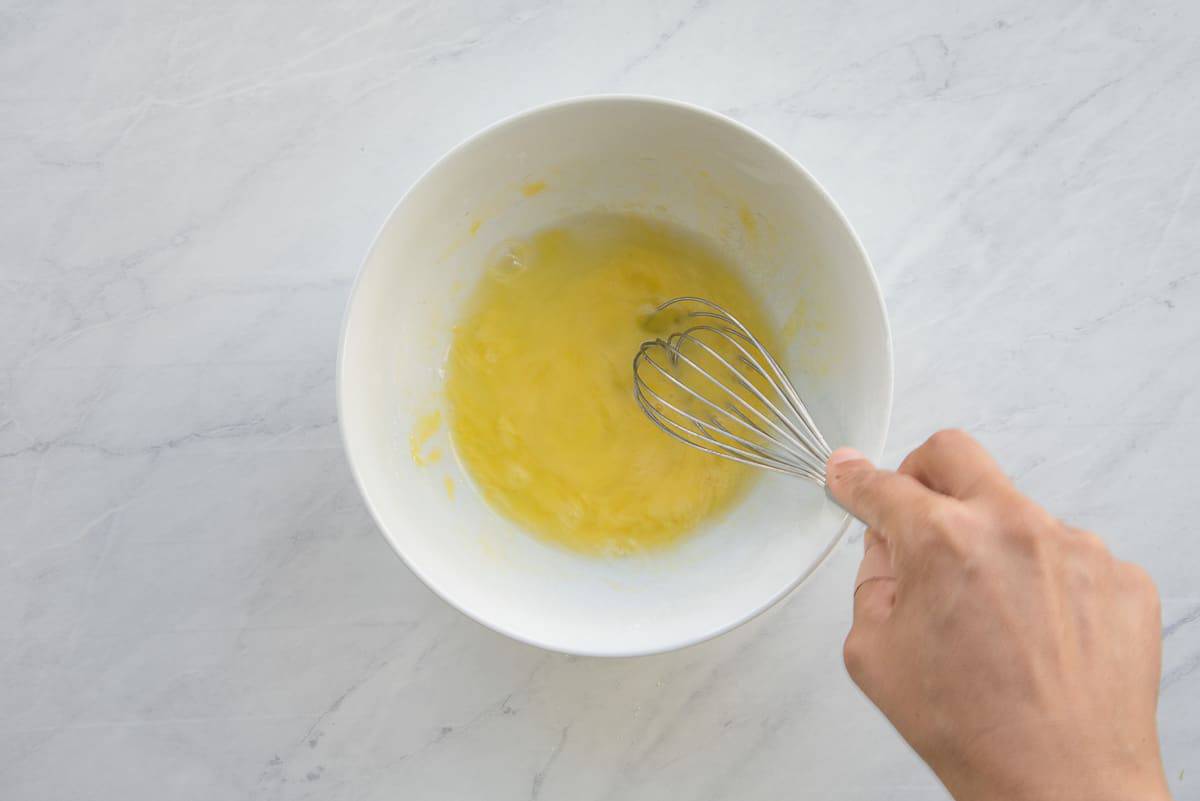
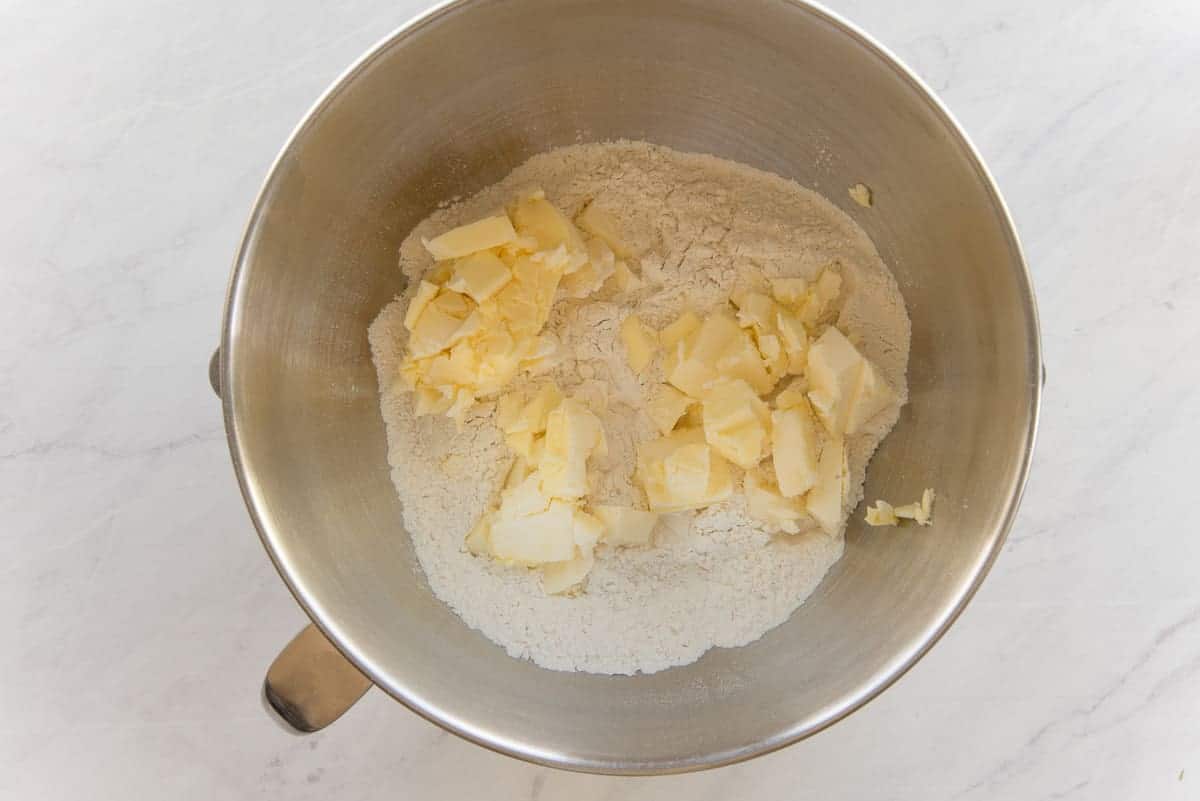
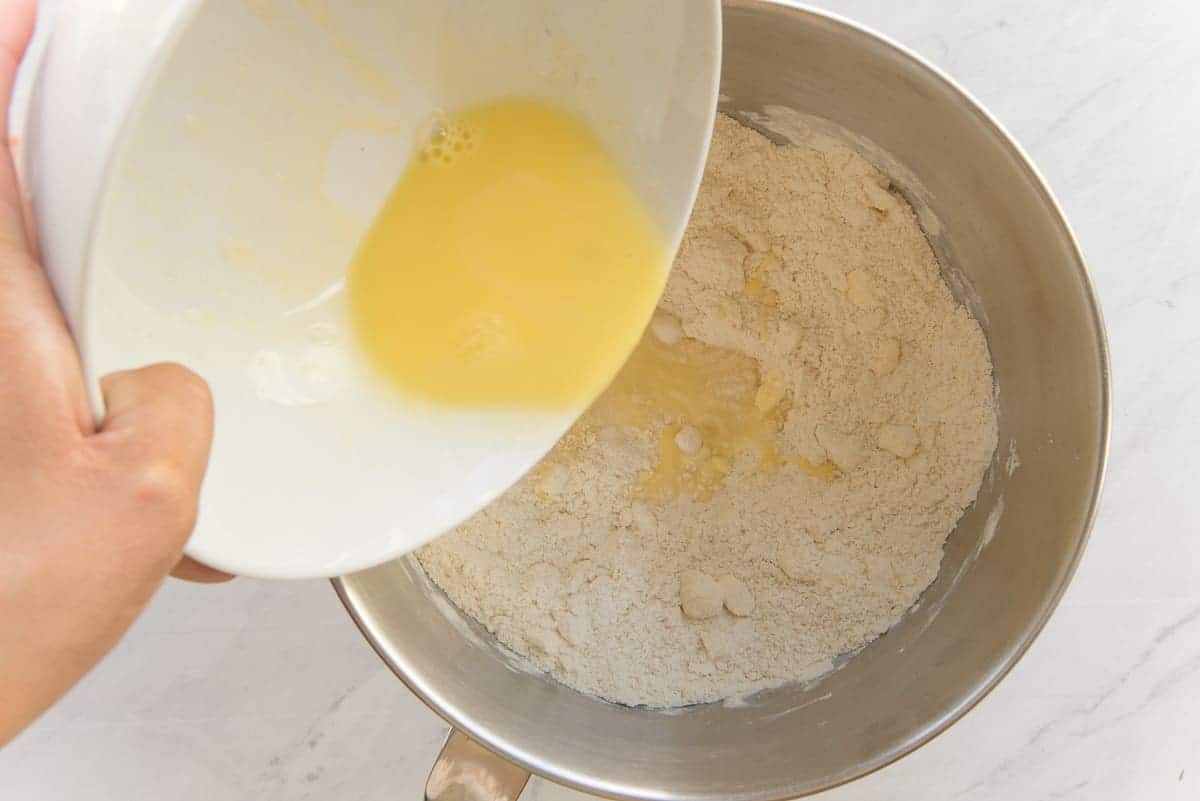
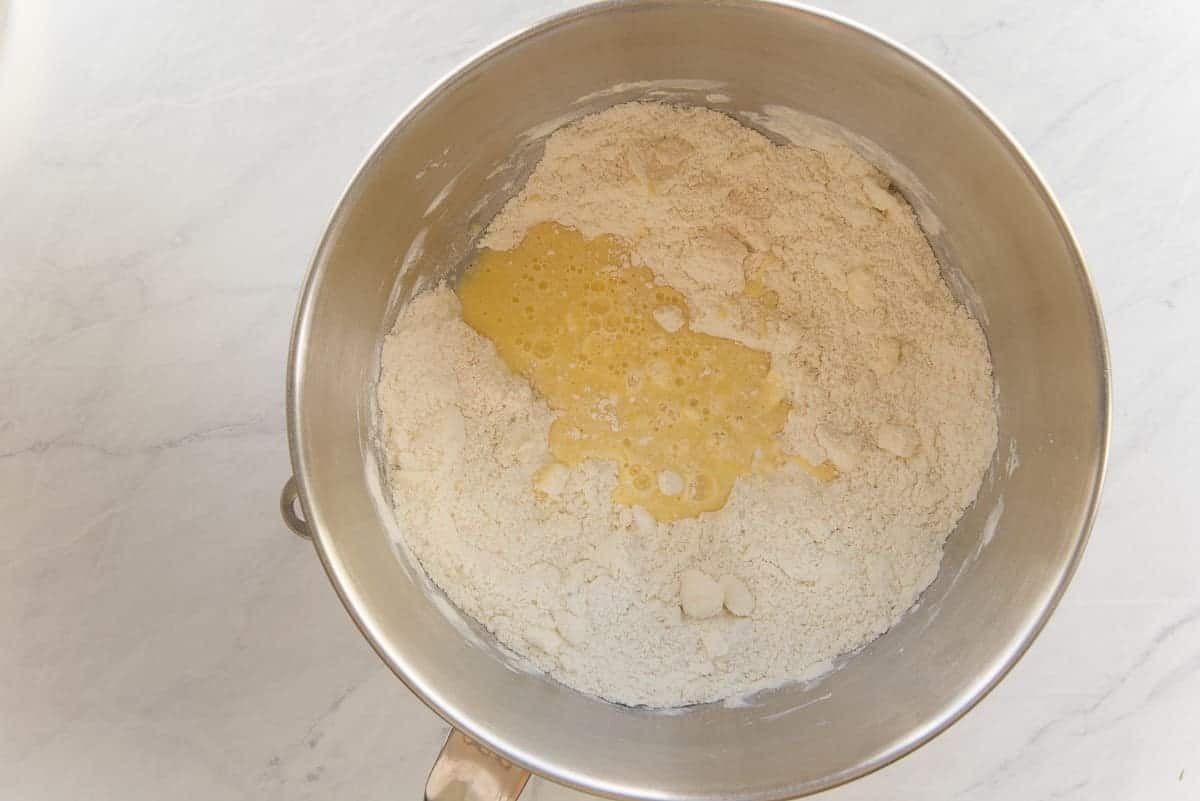
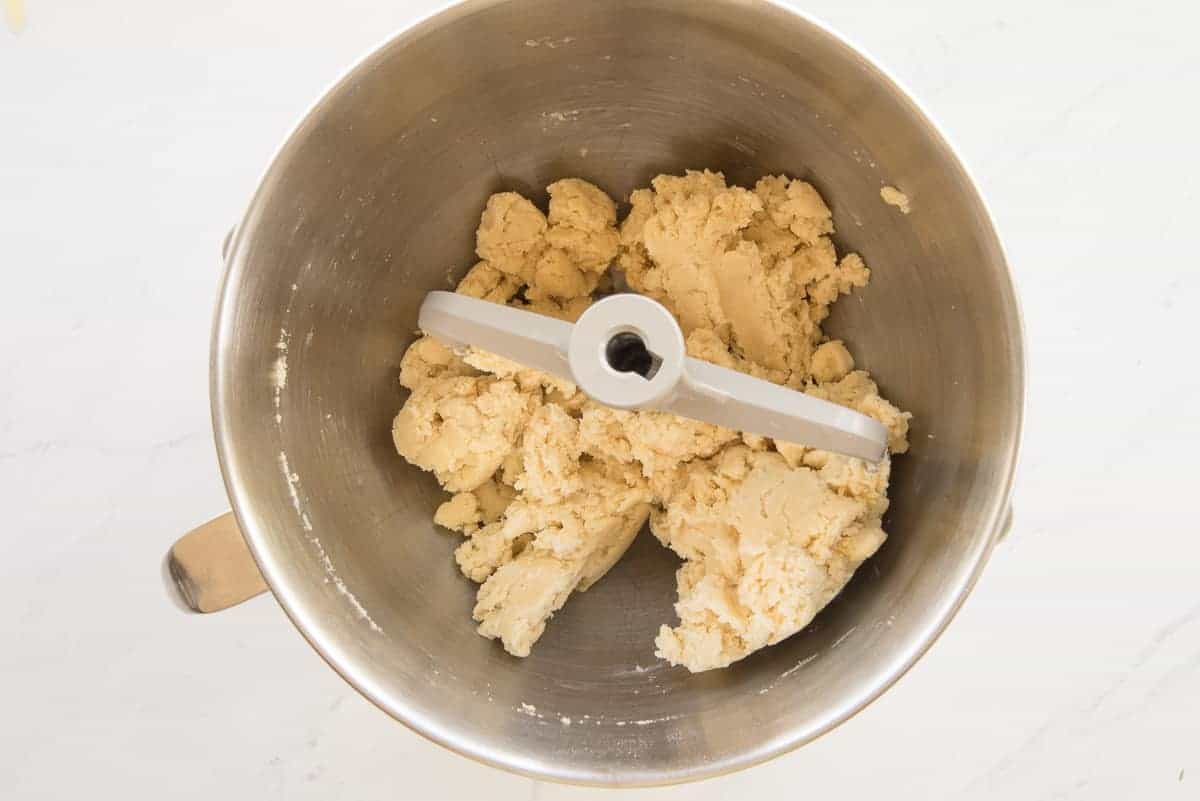

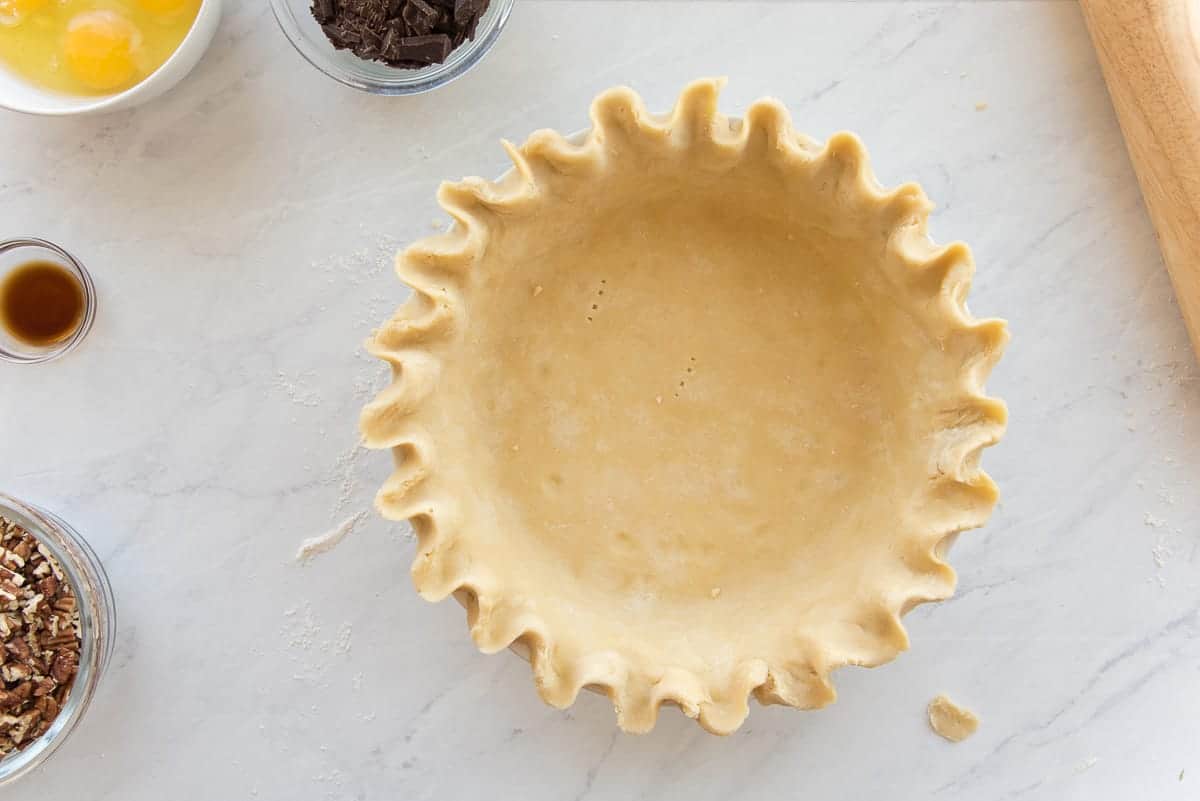
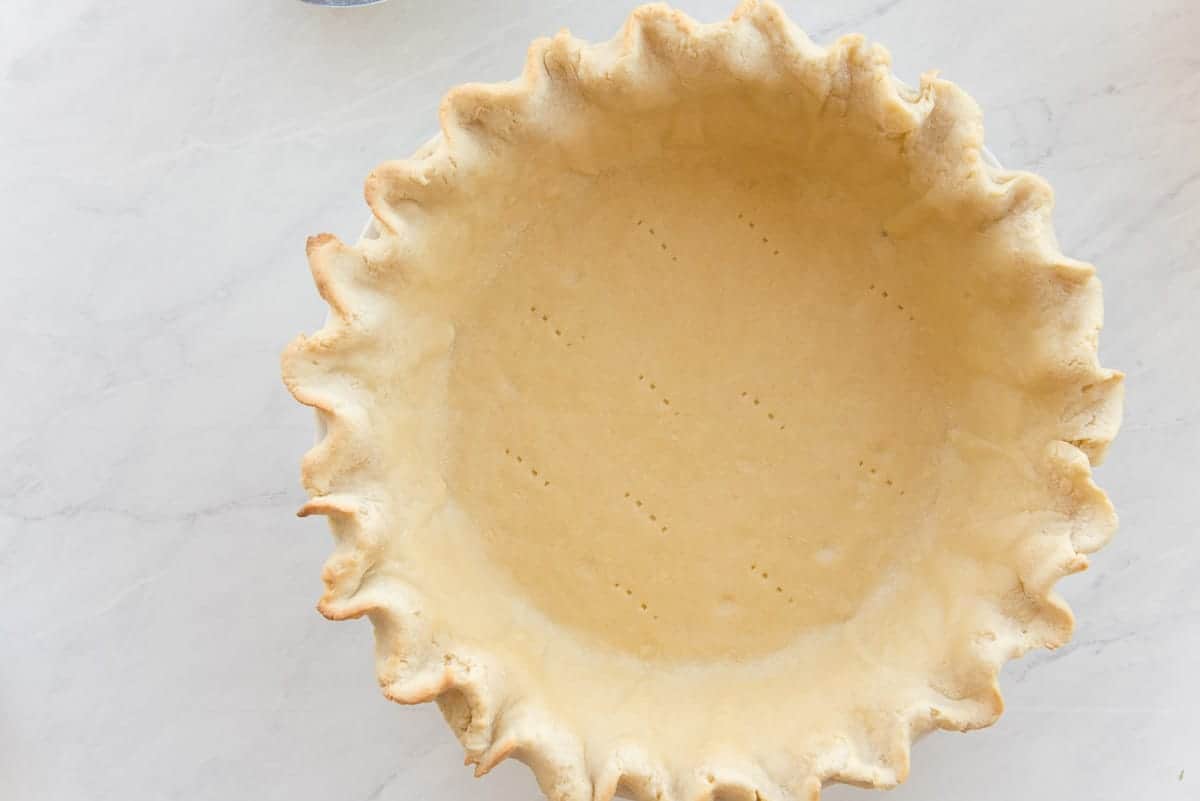
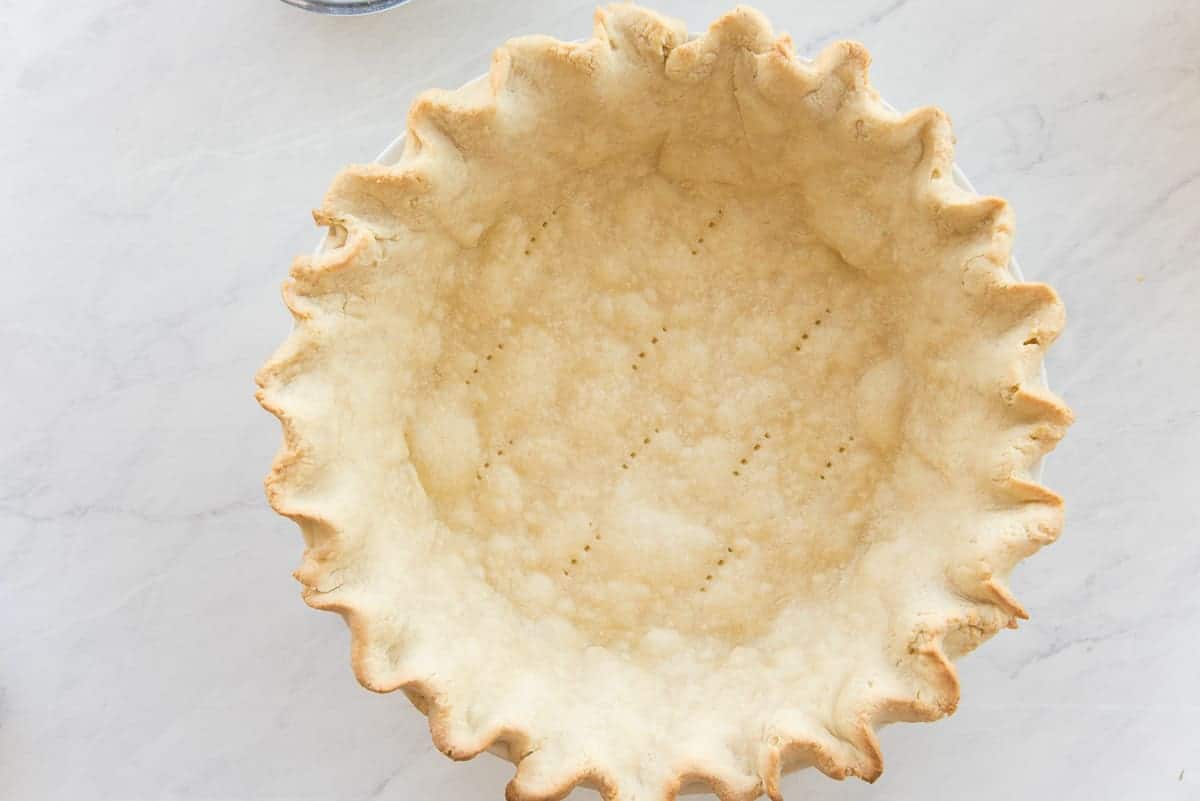

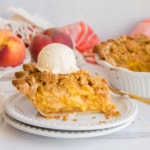
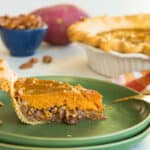

I’m so glad I stumbled across this mealy pie dough from one of your pie recipes! I really loved working with this dough. Will definitely become a staple!
This mealy pie dough is so easy to work with. I’m glad you found it and love it as I do!
In this Mealy pie crust I notice you don’t have the temperature it should be cooked in. Not unless I missed it. I know if was listed before because I did it last year and it was great but some how I don’t find it. When you give me the temperature can you tell me the temperature it would be cooked in, if using an electric oven? Any help would be appreciated. Thank you.
This is recipe for just the pie dough, itself, so no temp is included. You can use this in any pie recipe and follow their instructions for baking the whole pie. Here is one I like to use it in: https://senseandedibility.com/maple-bourbon-chocolate-pecan-pie/
There’s also some recommended pie recipes to use this in beneath the recipe card. Hope this helps.
This is the perfect pie crust recipe to use for all the pies that I plan on making this holiday season!
I’m so glad you think so, Sharon!
and now im craving pie lol!! could this be made gluten free ? would gluten free flour work. Would love to try this dough recipe out!
Yes! You can use 1 to 1 GF flour in place of the all-purpose.
This was really easy to make. Gotta make this for Thanksgiving.
I’m so glad you enjoyed it, Stephanie!